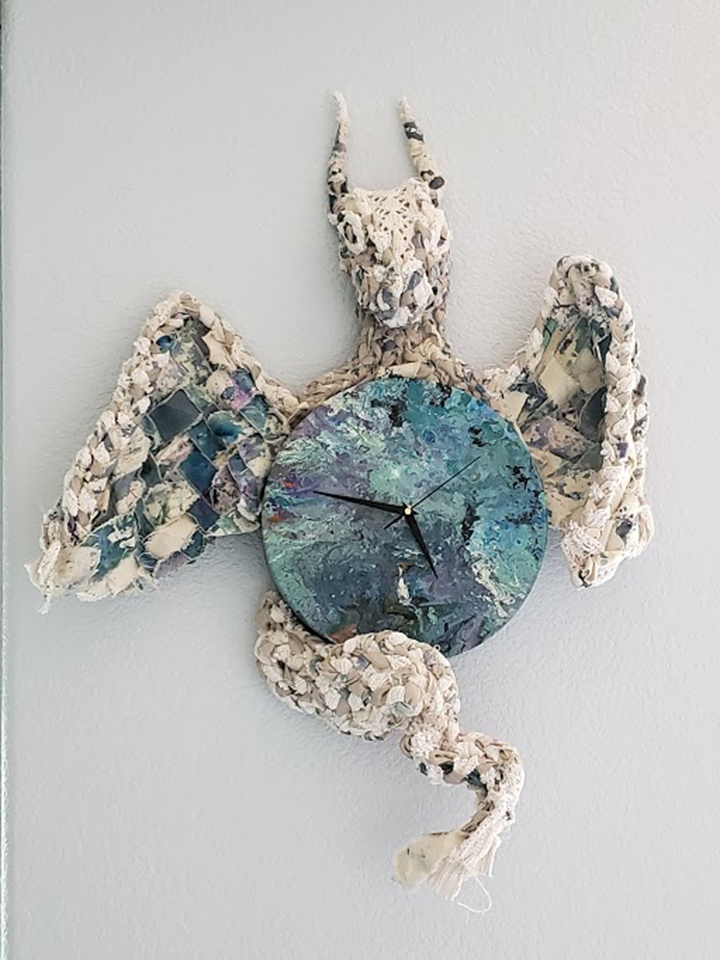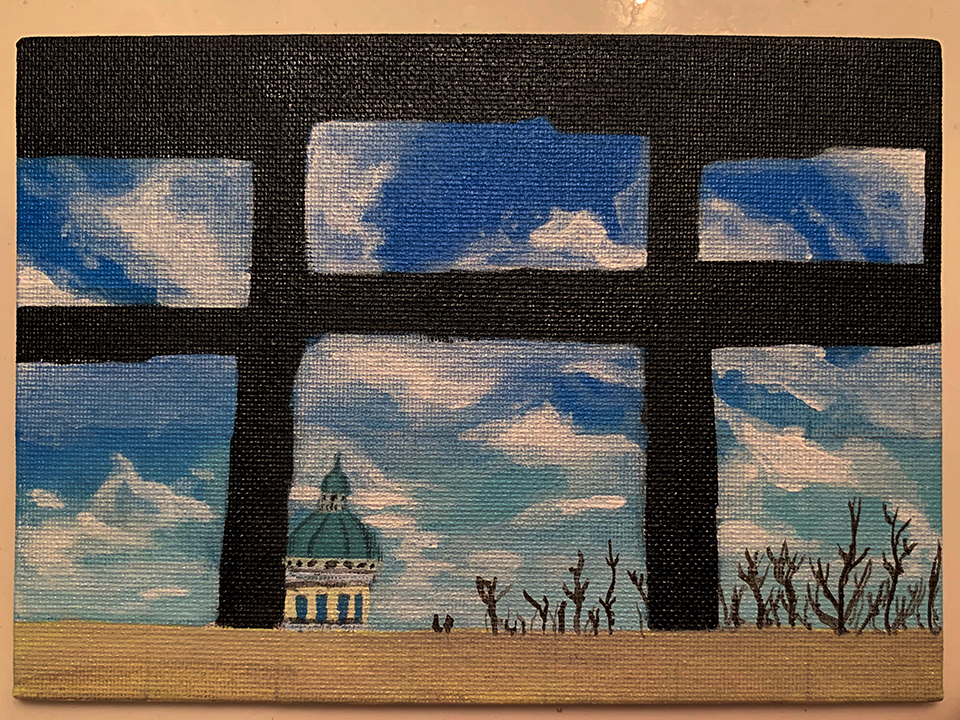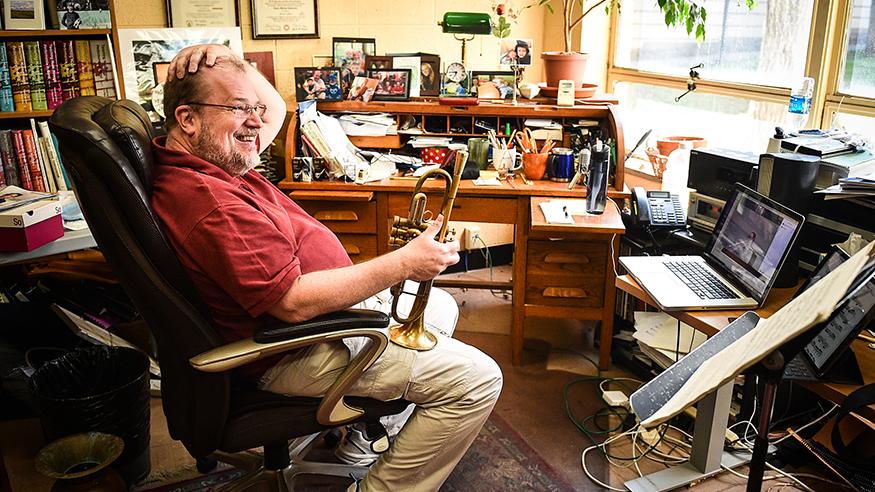
How do you teach a jazz dance move via iPhone?
Arts courses that take place in the studio or rehearsal space require innovation in adapting to distance learning.
Fortunately, Augustana’s arts professors are excellently suited to the task.
Adapting to the screen
“The biggest change is that now, students have very little access to materials and tools,” said studio art professor Megan Quinn, who is teaching two sculpture courses and multiple independent studies this term.
But distance learning has not stopped Quinn from forging ahead with projects in drawing, wire and paper, as well as supplementing “studio or kitchen” work with online videos and museum exhibitions.
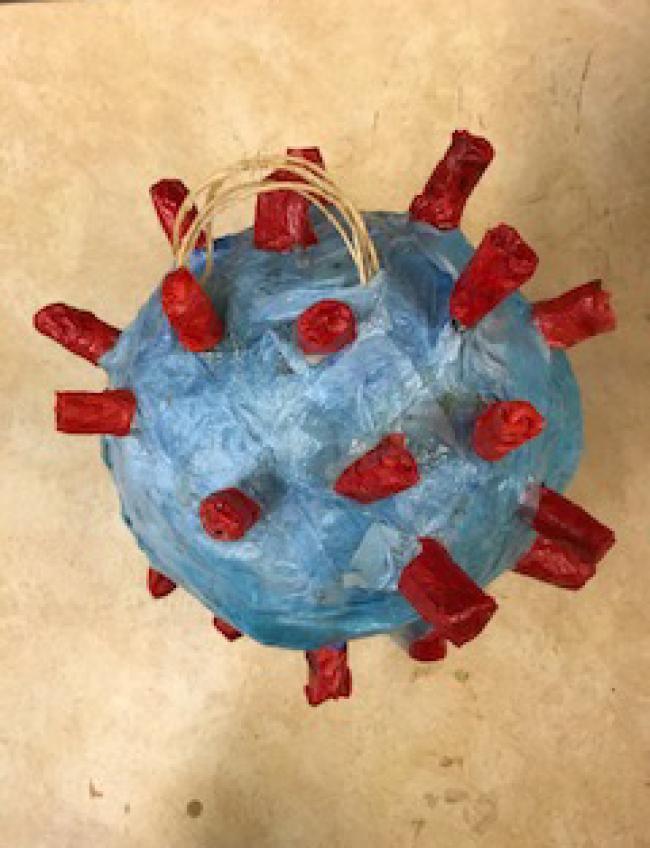
Who wants to take a whack? As part of a distance learning project on mold making, Quinn made this demonstration model of a COVID-19 virus and turned it into a piñata.
“I’ve also mailed a lot of pliers to students, and left materials at a drop site (it’s a secret!),” she said.
For musical theatre instructor Shelley Cooper, “movement classes are a whole different beast.”
Live warmups are held virtually twice a week, followed by “Broadway boot camp,” in which Cooper films a new dance combination from a well-known musical that her students then emulate.
Adapting courses such as Jazz Dance have required Cooper to minimize space used—where students before had free range of a studio, Cooper must now “figure out how to make my dances fit a [computer monitor] box or iPhone screen.”
The lack of physicality has affected instrumental music, too. Professor of music and band director James Lambrecht notes how difficult it can be to make adjustments during music lessons.
“Sometimes you have to touch [a student's] hands and show them where to place their fingers on certain things on a keyboard,” said Lambrecht. “It's easier to be right next to somebody and show them how to breathe, but you can't do some of this stuff in two dimensions.”
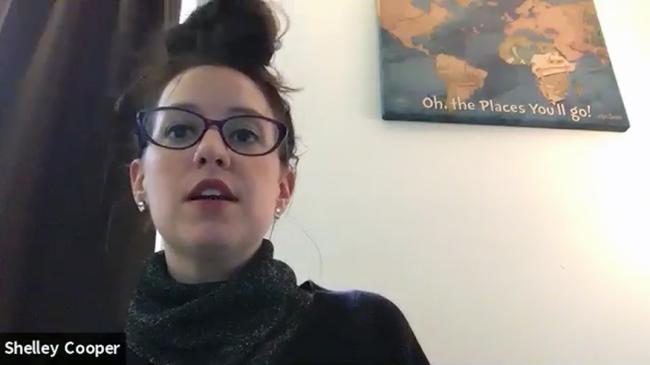

When students left campus to stay at home beginning March 13, Megan Quinn’s sculpture class hadn’t yet hollowed out their clay head forms. So Quinn scooped out the insides from 17 clay heads before firing them in the kiln.
Staying upbeat
Keeping an upbeat outlook in the face of drastic change is vital. Lambrecht notes that “When I'm teaching, it's 150% positive, all the time.”
Cooper stresses the importance of addressing the “white elephant” of anxiety and loneliness inherent in students being separated from their peers.
She wants to show her students “that they have someone who cares, because it's so important… asking honestly at the beginning of class how they’re doing and allowing students that want to speak up, to speak up.”
Meanwhile, the switch to digital feedback has allowed Quinn to grade and respond to projects faster, which in turn has fostered an involved cycle of feedback.
“I feel we’ve created a supportive environment which is also very educational and challenging,” said Quinn.
“In the assignments we’ve done I’ve asked them to share guided brainstorming and first attempts as well as more refined projects... I feel like we have supported and taught each other in the process.”
Looking forward to ‘crazy exciting’
While challenging, distance learning does have some positives. Cooper has newfound time to implement one-on-one sessions with students and has also invited directors and actors from all over the world to guest lecture for the Voice and Movement and the Musical Theatre History classes.
“Experiences like that have been really unique because of the COVID-19 situation,” said Cooper. “These performers and directors aren't as busy as they usually are, so they have time to come to class.”
However, professors are looking forward to being back in the studio and rehearsal space with their students. “It’s going to be crazy exciting, like a reunion,” said Lambrecht.
“I don't think, for the next 3, 4, 5, 6 years maybe... we will ever take for granted being in class with our peers, being together in rehearsals, being in performances, being able to create our music or our art.”
It’s sure to be an ecstatic reunion once students and faculty return to classrooms and studios. Meanwhile, one thing is certain: Art, whether created at home or at Augustana, will continue to flourish.
By Jack Harris ’20, Augustana Writers Bureau



